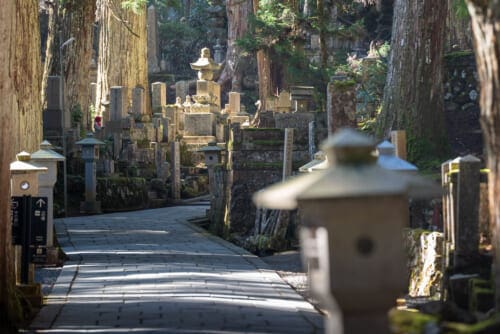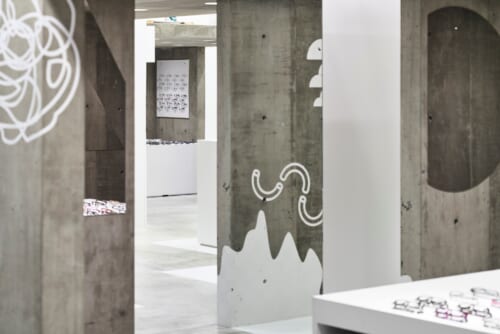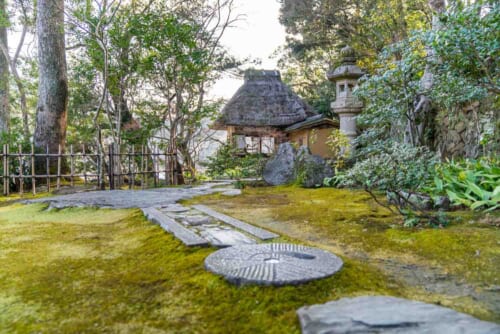In this month’s installment of Voyapon’s My Japan series, contributor Salomée Darneau shares her personal experiences of living in a quieter area of Kyoto which is still one of Japan’s most iconic and beloved cities.
After living in Tokyo, I found myself seeking a change of pace. While the Japanese capital’s vibrant energy and bustling streets are captivating, the constant crowds and fast-paced lifestyle eventually felt overwhelming. The endless buzz of Shinjuku’s concrete jungle offered a unique experience, especially while working a traditional office job, but I yearned for a quieter, more serene environment. That’s when I decided to make the move to Kyoto, a city renowned for its rich culture, stunning temples, and tranquil atmosphere.
Weekdays
My week starts on Sunday, as does the Japanese calendar. I had Fridays and Saturdays off while I was still a kaishain 会社員 (company employee), and I rather liked it, so I stuck with it. Sundays always feel slow and quiet as I return to work from the comfort of my home. I was never fond of open offices, and I much prefer working in my own environment. It can be lonely, but I like the quietness. I mostly do translation work, which is a rather solitary endeavor to start with.
I start early in the morning so that I can benefit from the day’s sunlight as much as possible. I have to admit, I do feel like the reality of a 9 to 5 job is a bit out of touch with the reality of Japan’s sunny hours, considering that in summer, the sun rises as early as 4:45 am.
The sun has still not set when my shift ends, so I can enjoy a ride outside, or a walk among quiet streets and rice fields. Kyoto has amazing nature, and it is not rare to see some wild animals around. In summer, it’s a bit too hot to go outside before sunset — especially to exercise, so I sometimes go to the river instead, and appreciate its cold and clear water. I am really grateful to be in a place where I can connect to nature so easily. It feels especially refreshing after a day sitting in front of my computer.
If I stay home, I usually try to stay away from screens after work — if I master the willpower to do so — to instead focus on more mindful practices or quality reading time. I am still trying to finish reading The Tale of Genji, among other things — after all, isn’t Kyoto the ideal place to read it?
Which prompts me to mention Uji, where I like to go occasionally, to enjoy a different side of Kyoto and an ever-welcome visit to the Genji Monogatari Museum — which has an impressive, freely accessible library that’s all about The Tale of Genji.
This is mostly how every day goes from Sunday to Wednesday, with some variation according to the seasons. Kyoto is especially rich in traditions following the 72 micro seasons of Japan, and has some interesting rituals throughout the year. Food is often related to seasonal events, and one thing I have been really enjoying here is discovering kyo-yasai, or Kyoto vegetables. I have eaten some eggplant and turnip from Kyoto that were surprisingly the best I’ve ever had — although unfortunately, they are still mostly sold wrapped in plastic.
Kyoto is, as everyone says, quite hot in summer and equally cold in winter — which can be tough, but also makes the city a fantastic place to enjoy the changes in the weather and colors throughout the year.
As a fan of summer, I’ll admit winter can feel long, its dark and cold nights daunting. Luckily, however, it’s possible to enjoy some snow when going to the northern part of Kyoto, which makes the season a bit more magical. It generally snows as early as December on top of Mount Hiei, one of Kyoto’s most iconic mountains.
Weekend
On Thursdays, I only work in the morning, so I have most of the day for myself. Perhaps it is because I am French, but I am not too fond of the 40-hour workweek, so I lessen the load a bit. I dedicate the time I have on Thursdays to personal projects.
And on my weekends, I like to explore the city, whether to discover new places or to revisit some favorite spots. Since I moved to Kyoto recently, there are still many places I have yet to visit, and this includes the whole Kansai region.
I only know Osaka (well, from 10 years ago), and a little bit of Shiga — an underrated prefecture, which I love for its impressive lake and charming countryside — so it’s exciting to think of all the places nearby just waiting to be explored.
My Favorite Place in Kyoto
Kurama, the mountain hamlet up north of the city, has captured my heart in a way no other place has. In summer, the landscape is lush and the river inviting, and the higurashi cicadas sing as the sun sets. In autumn, a combination of gold, orange and red foliage cover the mountain as the temperatures drop and in winter, the place becomes a snowy wonder. In spring, the last camellias still in bloom can be observed nearly everywhere — for there are a lot of them. There is much more to Kurama’s history and traditions, and it keeps fascinating me.
Its peak, at 584 meters, is accessible by a nice walk through the forest or even by a ropeway, and offers a wonderful view in any season.
The mountain’s greenery is truly impressive, and never fails to replenish me with lots of energy for the week to come. A great place to experience shinrinyoku 森林浴 (forest bathing). It is also very popular in summer when the city gets impossibly hot, since it offers a nice breath of fresh air, with temperatures easily 10°C below those downtown.
Famously, it is home to the Kurama Fire Festival in October, which draws in an impressive crowd of onlookers quickly filling up the narrow street of the village — and once trapped north of the main street, it can take a long time in the queue to finally reach the station again. This festival is a compelling example of Kyoto’s diverse culture and how deeply it is treasured by its communities. More than the fire itself, this is likely what makes the event so striking.
The Many Wonders of the Ancient Capital
There are many other places that offer the perfect respite at the end of the week, and they’re never too far to reach — after living in Tokyo, Kyoto feels pleasantly small. I like to walk along the Kamo River throughout the year, admiring the birds crossing it, the mountains in the distance, and the cityscape surrounding it. It makes for amazing strolls. The city also has an incredible botanical garden, which celebrated its 100th anniversary last year. Opened in 1924 as Japan’s first public botanical garden, it now houses about 120,000 plants. Before moving here, I never knew Kyoto was home to such a gem.
Obviously enough, I do enjoy Kyoto more than Tokyo at this point in time, and I am still amazed at everything this prefecture has to offer beyond its internationally famous landmarks. There’s no need to promote the city more than it already is, but I hope I could offer a glimpse of what makes Kyoto a great place not only to visit, but also to live in. Thank you for reading!







No Comments yet!